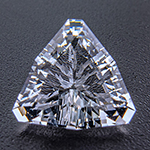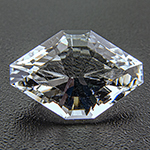Sanidine
Sanidine is a common high-temperature form of alkali- (potassium- ) feldspar
Sanidine shop


Two sanidines from the German "Eifel"
Origin of name: "Sanidine" is composed from Greek σανίς sanís for „plank, table“ und εἶδος eídos für „form, shape“ and relates to the tabular crystal habit.
Firstly described in 1789 by German doctor and mineralogist Karl Wilhelm Nose in treaties about Westphalia which in 1808 were incorporated into "Mineralogical studies of mountains at the lower Rhine" by Johann Jacob Nöggerath.
Type locality: Drachenfels mouintain, Westphalia, Germany.
Source: wikipedia
Synonyms and trade names: glassy feldspar, Rhyacolite
Can be confused with: other feldspars and a plethora of colourless stones.
Vorkommen: as of 2020 mindat.org lists 733 localities on all continents including Antarctica (Stand 2020).
Type locality is Drachenfels mountain, Westphalia, Germany.
Handling: like all feldspars sanidine has perfect cleavage and should be set, handled and worn with care. Do not clean ultrasonically!
 Deutsch
Deutsch